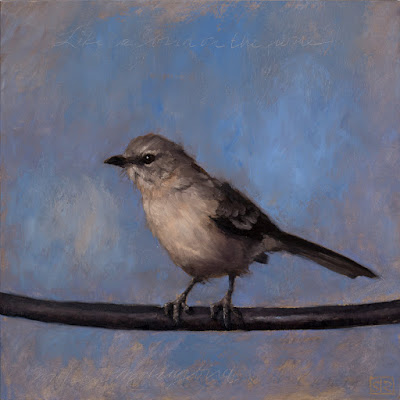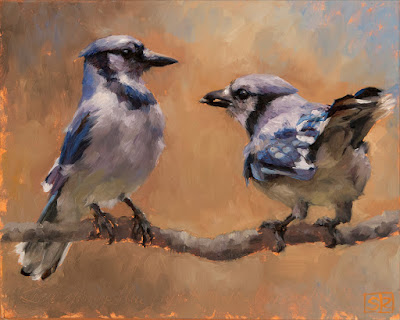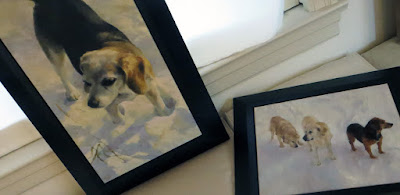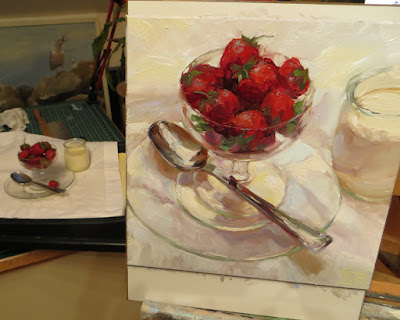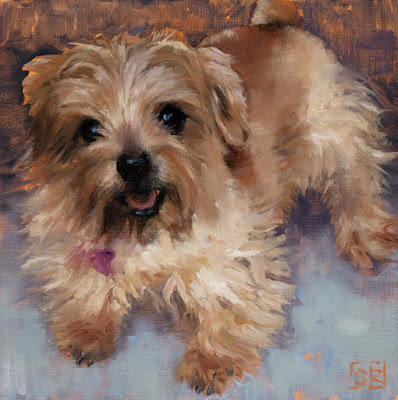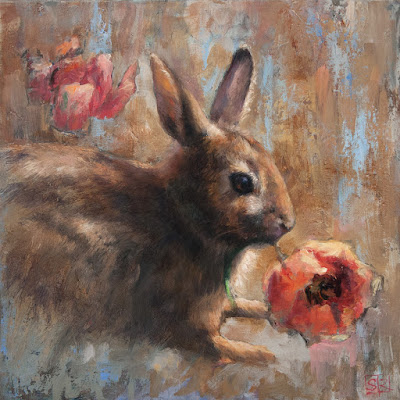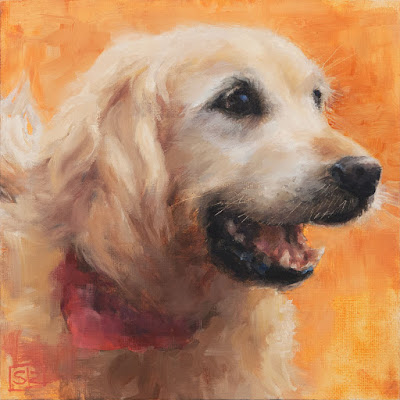 |
| Black dog, leashed, (detail) oil on panel 12" x 12" |
Black dogs get a bad rap. Winston Churchill famously referred to his depression as a black dog. But in Ian McEwan's postwar novel
Black Dogs, which I read a few years ago, the black dogs symbolize a greater malignity, something not specified directly, but glimpsed peripherally as a looming menace over Europe. And then there's the so-called black dog syndrome which suggests that black dogs are less likely to be adopted--perhaps because of their association with depression and evil.
 |
| Black dog, leashed, oil on panel 12" x 12" |
I was painting this black dog stoically waiting for his owner when I heard about the death of groundbreaking editor of Elle magazine in the UK, Sally Brampton. She'd written a book about her own struggle with depression called
Shoot the Damn Dog, which I haven't read, but which resonated a little as I painted with all these associations in my head.
This dog, leashed and waiting, looks too benign to be a threat, but I won't discount him entirely. It's easy to glimpse black dogs today in the lead-up to the American election, the refugee crisis, global warming... I really should stop listening to public radio in the studio.

